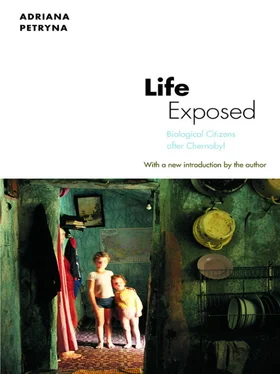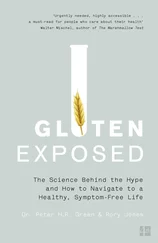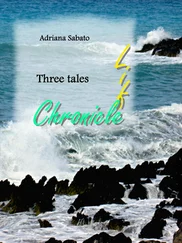What we can conclude with some certainty, however, is that the processes of making scientific knowledge are inextricable from the forms of power those processes legitimate and even provide solutions for. [16] Here I draw on insights from Shapin and Schaffer 1985:15, “Solutions to the problem of knowledge are embedded within practical solutions to the problem of social order, and… different practical solutions to the problem of social order encapsulate contrasting solutions to the problem of knowledge.”
How scientific knowledge is valued and the level at which it is said to hold significance can affect the planning of state interventions and medical surveillance, the size of populations considered to be at risk, and the courses of suffering and illnesses those populations experience. State interventions are predicated, in part, on policy makers’ understandings of the relationship between radiation dose and bodily harm. The so-called linear hypothesis states that harm is proportional to dose indeed, that radiation is harmful at any dose. [17] As Frank Von Hippel (2000) notes, the main battleground for the debate over whether there is a threshold dose below which radiation is not harmful is the regulation of nuclear power.
Here it is not a question of whether harmful effects such as additional cancers exist but whether there are technologies available that are sufficiently powerful to make those effects statistically detectable, and whether governments desire to invest in or make use of those technologies. Hence, the issues raised by the linear hypothesis are of an ethical, political, and economic nature.
Policy makers have several intervention options at their disposal. The degree to which they accept or reject the linear hypothesis shapes the types of intervention they consider and eventually implement. At one end, those options can be described as “low-tech” and minimally interventionist. The rationale here is that because it is impossible to detect the small increases in cancer deaths predicted by the linear hypothesis, cancers—or, for that matter, many other diseases—should not be singled out as radiogenic. In the Chernobyl case, this rationale influenced the size of affected cohorts receiving intervention. Soviet officials claimed that except for the initial group of cleanup workers sent into the Zone, the radiation exposures populations received were insignificant to their health. Indeed, there are many experts who remain committed to the idea that the primary health effects of Chernobyl are of a mental or psychosocial nature. In line with this reasoning, Soviet interventions focused on information dissemination (as in, for example, the state’s battle against “radiophobia”) and on the introduction of therapeutic and surveillance regimes to address psychosomatic ailments, characterized as products of individual psychological weakness and self-induction. Psychosocial medical categories were applied, to exclude the majority of claims.
An alternative course of action would involve a state’s immediate full disclosure about what is and is not known about the complexity of health outcomes (including an acknowledgment of those health outcomes as being some combination of clinically observable, stochastic, and psychological effects). This kind of approach informed Ukraine’s management of the aftermath and led, for example, to an improvement of the state’s public health surveillance system. Lifting constraints on international collaboration and foreign aid, the state made a variety of research technologies, ranging from the epidemiological to the clinical and molecular biological, available to researchers assessing the disaster’s health impact. A number of local scientists, in collaboration with molecular biologists and geneticists from Western Europe, the United States, and Japan, are still sorting out the genetic causes of radiation-induced cancers.
Both the Soviet and post-Soviet approaches entail social and political risks. If in the first case, Soviet managers can be accused of undermedicalizing or denying the health effects of the disaster altogether, Ukrainian managers can be accused of overmedicalizing their constituencies, and of creating a health system that fosters both rectification and abuse. My purpose, however, is not to allocate blame but to paint a clearer picture of the dynamic interplay between scientific and social orders, and how those orders come to define actual conditions of health: those aspects that protect or undermine it, and the moral and ethical discourses addressing its values and responsibilities. Following Veena Das’s characterization of the aftermath of the Bhopal chemical disaster, I also aim to elucidate how “pain and suffering are experiences that are actively created and distributed” (1995:138) within scientific/social orders themselves.
The number, novelty, physical variability, and duration of the kinds of harmful particles that were released in the Chernobyl explosion make the open-endedness of the disaster’s health effects hard to deny. This open-endedness necessitates further reflection on the ways the scientific research process itself contributes to the spread of pain and suffering by searching for easy answers and simple closures. In discerning the “true” causes of their subjects’ suffering, researchers themselves have inadvertently reified categories of authentic and inauthentic suffering, thus marginalizing those who happen to fall into the latter category. So as not to contribute to this marginalizing, I avoided pigeonholing people affected by the disaster as suffering from either “hard” biologically induced symptoms or “soft” psychological ones—though their reasons for claiming the primacy of one etiology over another often entail moral and epistemological claims.
My decision to abstain from judgment is also supported on empirical grounds. Scientific understanding, along with policy decisions, popular pressures, and availability of technological resources, can shift the frames of what is considered evidence of the physical impact of the disaster. What becomes central to this analysis is the different social contexts in which scientific knowledge is placed and the ethical values it is used to support. Worlds of science, statistics, bureaucracy, suffering, power, and biological processes coevolve here in particular and unstable ways. How to discern their patterns as locally observable realities that affect people’s daily lives and senses of moral and bodily integrity—or, put another way, how to do an ethnography of the relationships among biological, political, and social processes as those relationships evolve—is a major creative challenge of this work.
The concept of biopolitics provides a further key to making sense of the ways these processes are related and the way they shape the lives of individuals and populations. Biopower refers to controls over life, denoting “what brought life and its mechanisms into the realm of explicit calculations and made knowledge-power an agent of transformation of human life” (Foucault 1980a: 143). [18] For Foucault, the nuclear era represented biopower’s culmination. “If nuclear energy is the modern capacity to expose populations to unprecedented kinds of risk and potential death, it is also the underside of the power to generate life through the biological administration of individuals and populations (1980a:137).
Such transformations are said to occur at two levels: that of the human body as the object of discipline and surveillance, and that of the population as the object of regulation, control, and welfare. Michel Foucault pointed to a particularly salient moment in the history of biopower in his analysis of eighteenth-century France (1980b). It was in this period, he argued, that the consolidation of centralized state administrative power went hand in hand with a new concern for the health and social welfare of populations. Health was recast in the service of the state; the capacities of individuals were to be maximized inasmuch as those individuals lived, labored, and reproduced within a given territory and ruling apparatus. Populations possessed biological characteristics that made them more predictable. Demographic statistics, calculations of life expectancy and levels of mortality, patterns of marriage and procreation, and the categorization of bodies as more or less useful with greater or lesser prospects of survival constituted new types of knowledge contributing to radically new experiences of control in modern life.
Читать дальше












